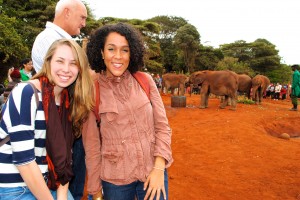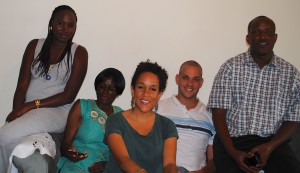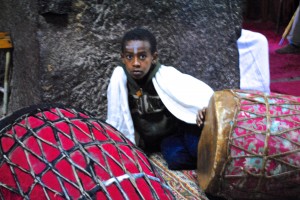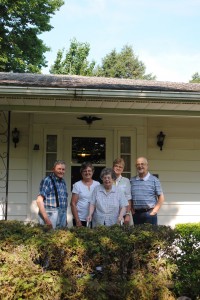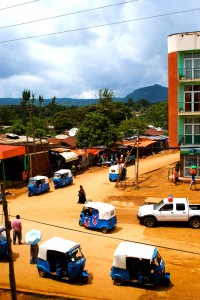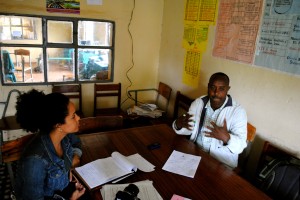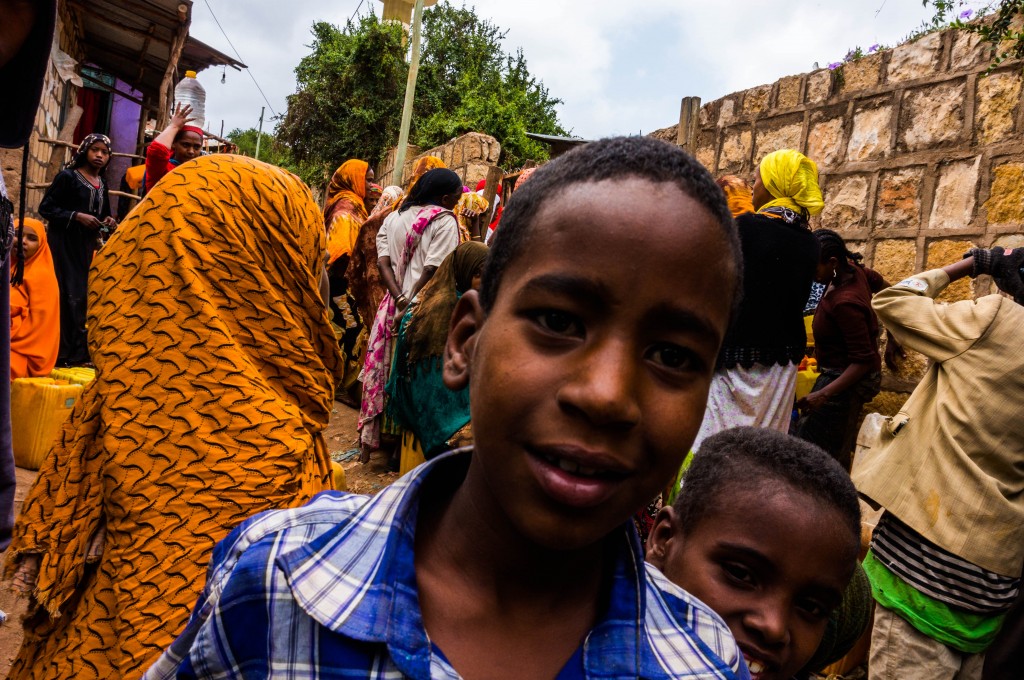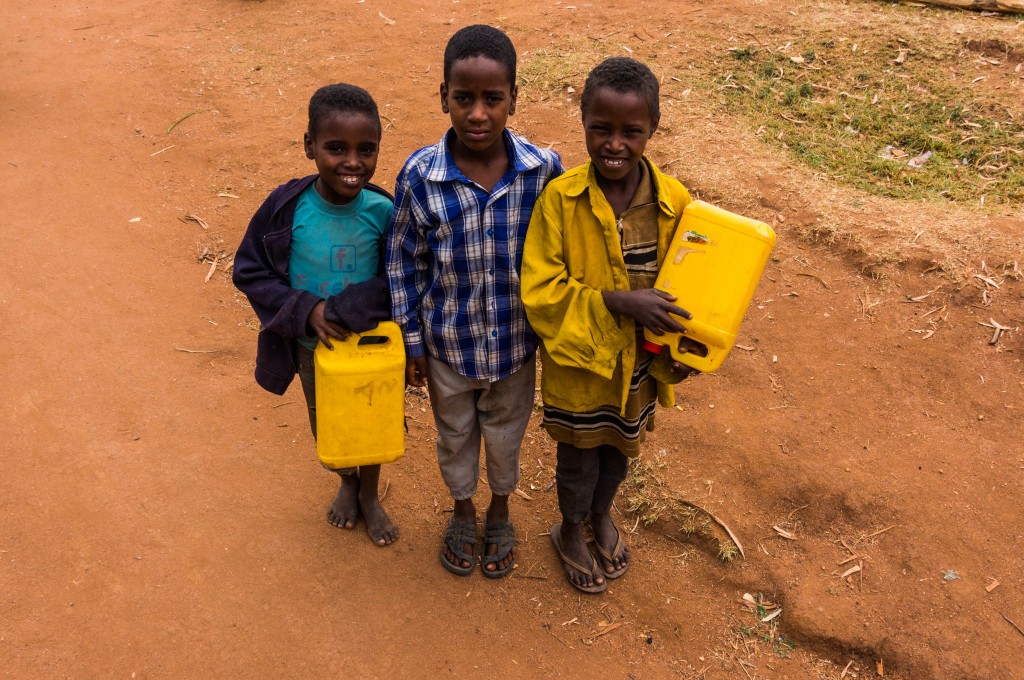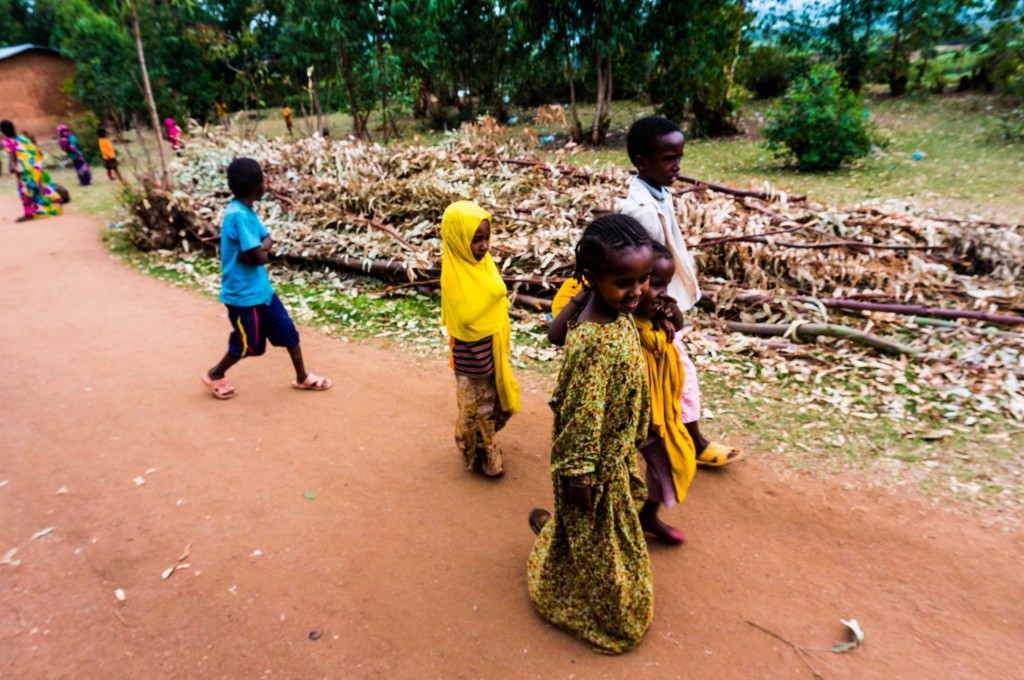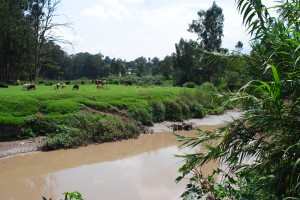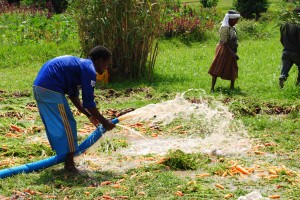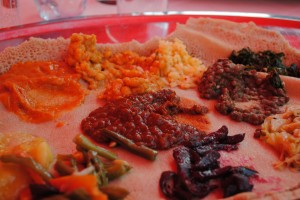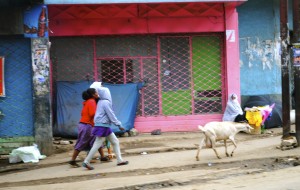Archive for category Ethiopia
Birthday
Posted by Katie Petitt in Ethiopia, Katie Petitt on August 29, 2014
Today I turn 27. Today, 27 years ago, my mom was 27 years and 27 days old. I always thought when I was 27, I would have my first child, and why not? It is a good age to have a kid, and many of my friends are at that stage in life. I always thought that at the magic age of 27 I would catch the baby bug and want a family of my own. Instead, I have the travel bug and I might as well be 27 years away from having my first child.
Today instead of embracing motherhood, I embrace another adventure. The last 13 months have been a wonderful whirlwind of travel and exploration. I lived and studied in Costa Rica with some of the most beautiful people on earth, and saw some of the most beautiful tropical environments known to man. I traveled Central America, learning more about my American neighbors and enjoying their company. I spent 2 months in Ethiopia, traveling and hearing both heartbreaking and inspiring stories about one of life’s most essential elements: water. And now I get to fulfill a childhood dream and go to Kenya.
When I was 7 my teacher assigned us a project where we had to research a country of our choice. Now Lion King had just been released and I was of the age where I was learning about my African-American ancestors and slavery. My dad always believed we came from Kenya, and this made me love the Lion King even more (I am also part Native American and had a great love for Pocahontas too. In my mom’s defense, Disney movies were not the only way I learned about these cultures- at the age of 7 these were just the most enjoyable). Needless to say, I chose Kenya for my country of choice and presented my well-researched tri-fold board on my new favorite place. Ever since that time 20 years ago, I have wanted to go to Kenya. I lived in South Africa and that was close, but it was too expensive to visit. When I found out I was going to Ethiopia for this fellowship and just how close I would be, I knew I had to finally go to Kenya and fulfill a dream many years in the making.
Life is a funny adventure that takes you many places throughout your journey. I love the journey and find it constantly changing my beliefs about what I thought was true before. This life-journey teaches me that the more I see, the less I know. It is a challenging but beautiful lesson that feels like standing in a star-filled sky looking up and realizing just how small you are, but also realizing the beauty and majesty that is this world.
Every year there is a meteor shower around my birthday. My mom and I used to sit outside on our front yard and watch the stars fall down around us in the big Texas sky. I always loved these nights and feeling small, yet beautiful, and immensely lucky to take part in it all. 27 years of life lived, and it has not been what I expected, but I am looking forward to the journey.
Lalibelia
Posted by Katie Petitt in Ethiopia, Katie Petitt on August 29, 2014
We are traveling for about 5 days, not as storytellers but as tourists. It is said that if you go one place during your time in Ethiopia, it should be Lalibelia. Lalibelia is a town with a collection of 12th and 13th century churches that are carved out of rock, and still used today. We flew here with a friend we met on the road, and the 3 of us have been looking forward to our time around the churches, mostly due the hype built up by our tour guide books (locally called foreigners’ bibles). We went to see the first and most impressive batch of churches yesterday afternoon as soon as we arrived. Now I have to be honest, I was impressed with their beauty, but not blown away like the good-book Lonely Planet had said. Maybe we can just chalk it up to the food poisoning I am still suffering from 2 days later, or the long travel day. Whatever it was, it was not until we entered the largest of the churches the next morning for Sunday worship that the real beauty of this place really hit me. The worshipers were all dressed in white scarves and cloaks that they tie and fashion a hundred different ways. This clean and ancient looking attire, with the backdrop of the ancient earthy red buildings make you feel you have gone back in time about 1,000 years. Not much has changed with the religion or practice since the churches were first created, and it was a small girl who is turning 11 tomorrow who made me realize just how magical it was to be there.
Once we entered the church, I thought we would be gawked at and given the familiar finger shake I have grown accustomed to as I take photos around the country. Instead, I met this girl as I waited in a mass of people to get a glimpse of a 7kg gold cross that only comes out on Sundays. This little girl very sweetly asked where I was from and what my name was. I told her and asked her the same. She told me how konjono I am (compliments always accepted) and I repaid her the compliment and knew we would be friends. She asked if I liked the service and I told her of course I did. She took me to the different stations around the church and encouraged me to really look at them. There was a finely dressed priest offering the Lalibela cross (the seal of this region) to be kissed for a blessing. In the corners old women and children sat surrounded by their white scarves as they sat quietly and reflectively. Wandering around was another priest offering to place white ash on the foreheads of all who desired it. In the center, a half circle of priests and deacons chanted the Bible in the ancient language of Ge’ez, singing historical hymns and playing the traditional drums.
My new friend took me by the hand and we bounced from station to station. She was so excited to show me these things and to share this special place and culture with me. At one point she disappeared, and I made new young friends who were also eager to welcome me into their spiritual home and make sure I was comfortable. A few minutes later my first friend came back and she pulled my hand so I would bend down. She reached up to my forehead and placed the white ash on my head, smiling all along. Growing up, I went to Ash Wednesday services and had black ash placed on my head by pastors. It was always a nice evening that I enjoyed as a kid, but being blessed by a child stranger was quite konjono.
Farming
Posted by Katie Petitt in Ethiopia, Katie Petitt on August 29, 2014
This time last year I was on my family’s corn and soy farm in Central Illinois. It was a great experience: I got to ride tractors, see a newborn calf, go to the annual ice cream social at the church my grandparents were married in, and learn about my family’s history. My grandma grew up on this farm with her 7 brothers and sisters, and her father grew up on the same farm before her. I love the history of this place and the idea of farming for a living; to feed ones family and others.
My grandma grew up with parents who were sustenance farmers. Her parents and brothers grew what they needed to feed their family, and the rest of what they grew, raised or made would go to support other needs and to invest in more land. On the other side of my family, my grandpa was a pastor’s son, but his family raised rabbits to sell for meat. When my grandparents were growing up, the US was around 18% agricultural. Farms are still important in the US now, but with Monsanto, Tyson and other huge industries, food and farming isn’t the family trade it use to be.
Here in Ethiopia, the society is highly agricultural. 80% of the country’s economy and population is agricultural, and this week we have been out in the thick of it. We are in Harar, Ethiopia, in the central part of the country, about 12 hours (via bus) east of Addis Ababa. The drive was really beautiful, although I slept through most of it. The road is lined with small sustenance farms. Here in Harar we visited a village where many of the community members are farmers growing grain, potatoes and chat. This village, and I can imagine many of the villages we passed, has no irrigation and relies on the rain. The rain here is essential, and as of right now the rain is late. The farmers are worried every day and are ready for the rainy seasons to begin.
Growing up, my grandma would always keep me informed on how her brothers were doing on the farm and what the rain and weather were doing to their crops. They have huge irrigation systems, yet are still highly reliant on the weather. I can’t imagine how stressful it must be for these farmers in the Harar region who are farming without irrigation or a water catchment systems. The weather is becoming drier in this region and the rains are less and less reliable with climate change.
I love to grow things, to start something from a seed and watch it grow. I use to have urban gardens and it was always so nice to eat the things I grew and share them with friends. As a highschooler I dreamed of going to some far off place kind of like Harar, Ethiopia, and becoming a sustenance farmer. I longed for a simple life where I could spend time outside, build great relationships and not worry about much else. I know now that farming is not as easy as I once thought, and when food doesn’t grow then there is no food for the table. Yet, I still have such a respect for the farming profession. Farmers give food, and like water, food is life.
Crooked Roads: A Tale of Ethiopia
Posted by Katie Petitt in Ethiopia, Katie Petitt on August 29, 2014
Phoenix and I spent a long, but good morning interviewing different community leaders in Jimma, one of the towns we were visiting. We listened and learned, and when it was time to go we politely excused ourselves. Instead of walking back to our hotel alone, one of the community leaders offered to walk us back because his house was on the way. We agreed thankfully and the 3 of us went on our way. The walk allowed us to talk about many things. In fact our conversations were quite philosophical and included our life ambitions, politics, religion and just what life is like in the town we were walking. As we neared the hotel I commented on the good quality of the road. I had read that it was new and it still looked it, yet there were large pot holes in some areas (the road was built on a swamp and I guess with that comes quick deterioration). Our new friend confirmed that the road was new and was put in 2 or 3 years before. As we passed over a small bridge our walking guide stretched out his arm and pointed to the road that went out in front of us. He asked if we saw the bend in the otherwise straight road. Looking down the horizon just a bit, we could indeed see how the road turned. As we looked on, we wondered at the importance of such a seemingly small fact. Our friend went on as he told us to not believe anyone who claims that Ethiopia does not have corruption. He said that because of local corruption, even the roads are crooked.
As he said this he paused, giving me time to wonder if this was a metaphor or if there was more to this story. As we walked towards the bend, I had to ask for him to go on- a good storyteller always likes to be cheered on. He continued by saying that the road was supposed to go in a straight line through Jimma. As construction plans were made, the buildings and homes in the way of this significant paved road- the only in the town and the most important- were slated to be torn down and their inhabitants moved. Yet on this road, just past the river we were crossing, was a rich man who had a home lying in the path of the construction and the soon-to-be road. The rich man saw no need to relocate and paid the contractors to divert the road around the house. The contractors were corrupt and happily agreed to the bribe. They diverted the road around the man’s house, creating the crook we saw before us. Our narrator laughed and shook his head at the symbolism embedded in this imagery, as we turned with the road and on to our hotel.
Interviews
Posted by Katie Petitt in Ethiopia, Katie Petitt on August 29, 2014
The other day I was looking at film I have of our 2nd interview, and I thought to myself: ‘Wow I am really in Ethiopia… this is crazy’. The film and the interview take place in a a northern neighborhood of Addis. In this area of the city there is no running water. There hasn’t been for around 2 years. Instead, the government has a water tank that they fill 2x a day. For the interview we went to see the lines that cue at the tank. The residents here (mostly children and women, as well as young men who make this their business) fill these 20 lb – 40 lb jerry cans again, and again throughout the day so they have enough to wash with, clean with, cook with and sometimes drink. 20 jerry cans are needed to do laundry for a family, to give you an idea of just how often they come to the tank. Each jerry can is 20 cent bir and they hold 20 liters. Please look for our upcoming final project to listen to the interviews and learn more about this area.
I say all this in part to tell you that sometimes I am just shocked that I am here in Ethiopia. It is a beautiful place and I love it, but it is still an adjustment. Today we went on our 4th interview. We have left Addis for the first time and have traveled southwest to a city called Jimma. We have a contact here who is pretty much amazing. He invited us to a graduation today, and Phoenix and I were very much looking forward to it. At first we thought it was his graduation (his 2nd BA), but we missed that by one day and instead went to the secondary school where he teaches environment, sustainability and chemistry. Today happened to be the 9th grade graduation (about 500 students in a school well over 1,000 for 9th and 10th grade – with only 14 teachers). We were shown the school grounds and then ushered into meetings with the school leaders. We learned about the good work the school is doing despite limited resources, and they bragged about the quality of teachers they have at their school (I am a big fan of schools that love their teachers since my husband is a teacher). After we learned about water issues in the school and in Jimma at large, we were asked to sit under a tree to join the celebration. We were given a seat of honor next to the principal and other leaders. It was again one of those surreal moments where I just couldn’t believe where I was. Colorfully dressed women and girls, and dapper men and boys squeezed into the school benches they brought out from the classroom. This meeting under a tree included traditional songs and music, drama and long-winded speeches from many people. Awards were given to the top students and the crowd looked on with pride as these star pupils were given dictionaries wrapped in shiny Christmas paper. 


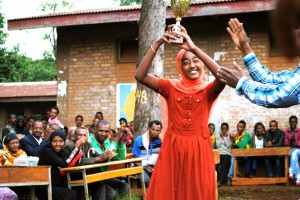
As I look at Ethiopia all around me, I am continuously in awe that I get to be apart of it, even for a short time. I am learning so much and it has already been a great adventure.
The Kids of Gonda Boya
Posted by Phoenix McLaughlin in Ethiopia, Phoenix McLaughlin on August 10, 2014
It is impossible to take a picture of just one kid in a town in Ethiopia. Our site visit in the photo-hungry, kid-heavy village of Gonda Boya a few weeks ago made that clear.
We spent July 14th trough 21st in the Harar area in Ethiopia’s dry Eastern region. Harar itself is an impressive city with an impressive history to match; it’s an ancient city with 99 mosques and a distinct language packed into the confines of the old walls. But our work did not bring us within those walls—we had two topics of focus in the area nearby: the work of the Hararghe Catholic Secretariat (HCS) and the water situation in Gonda Boya. I’ll get to HCS in another blog post, because it was really Gonda Boya that brought out the kids in force. The village of 2,000 rubs up against the walls of Haramaya University, one of Ethiopia’s major universities, and has very limited water access.
Around mid-July, Katie and I made it out there and were shown around the village by a community leader. While walking around, we were almost constantly surrounded by children. There would be a long line behind us on the tighter paths, and a wide formation to our sides when we were in the open areas. Taking a picture of just one was not an option; as soon as one of us brought up our camera, they would all crowd around whoever or whatever was our intended target. Then they would all want to see the picture of themselves on our camera of course. Some would wander with us far from their home, and our host would occasionally scold them and scare them back. Some were very shy, but most were not. Some were carrying jerry cans of water.
Here they are:

Two at Sunset
Peaks and Valleys
Posted by Phoenix McLaughlin in Ethiopia, Phoenix McLaughlin on August 10, 2014
I wrote this a few days before returning home, around August 3rd or so. It was meant to be a brief explanation of why I hadn’t posted a blog in awhile, and I feel like it is still worth mentioning before I start doing back posts about the past few weeks.
The peaks and valleys, the highs and lows, the ups and downs—they are all major features of international travel. The midway slump is well documented among travelers, whether they are tourists or emigrants. As my lack of blogging recently can attest to, I was not impervious to the downturn on this trip to Ethiopia. The problem is easily diagnosed and it is simple to trace its origins, although a cure is unknown. The problem is that for the first month or so, the traveler is enamored with their new and unusual surroundings. The food is different, the language is different, the scenery is different, the smell is different, and so on. It is all exciting, and it is all noteworthy; it is also more blogworthy.
Or, I should say, it feels more blogworthy. The new country is no less fascinating, but after awhile, the wonder wears off. Things are not less interesting or less important, but their effect is diminished on the traveler. After my last blog post about seeing a graduation in Jimma, I reached that valley of shoulder shrugging. We continued to travel all over Ethiopia and our work really took off, but the intrigue of everyday life—the foundation of travel blogging—dissipated. With the onset of a traveler’s slump, it became much more difficult to sort out the interesting from the mundane, especially for presentation to a distant audience. Hence, I have been blogless.
But do not fear, for this is not a blog stating the events of the last three weeks shall never see the light of the internet. It is a small elucidation on the reason why my part of the blog has been empty recently (i.e. an excuse). Over the coming days and weeks, Katie and I will be putting a lot of work into creating the final outputs of our work, attempting to transform the huge amount of material we gathered into presentable tidbits of media for your viewing pleasure. During that time, I will surely be reflecting on the many places we’ve been and the many things I want to say over this platform, and I will work on filling in the gaps.
Going Home
Posted by Phoenix McLaughlin in Ethiopia, Phoenix McLaughlin on August 7, 2014
I am sitting in the Frankfurt airport right now waiting to board my flight to Boston. There is certainly a lot to say as my time in Ethiopia ends, but I won’t be saying much of it right now since I have about ten minutes until my flight boards.
I do have time to say this: being a Peacebuilder Fellow in Ethiopia has been the most rewarding work I have ever done. I was endlessly frustrated by many things while living and traveling in Ethiopia, but the work itself was nothing short of inspiring. Almost every organization and individual we contacted went out of their way to help us and led us to amazing stories of the struggles and progress surrounding water in Ethiopia. I would typically feel an incredible sense of exhaustion before our meetings, primarily stemming from the dread of dealing with the transportation system in Addis and elsewhere. But I would leave each meeting with a smile on my face. We spoke to aid workers, academics, government officials, teachers, engineers, farmers, community leaders, and generally concerned citizens, and all of them had something important to say. Even after meeting dozens of individuals over two months, we were still learning many new things at our meetings towards the end. There was simply no shortage of new issues and new perspectives on old issues, all of which were incredibly valuable.
Now I’m going home. I can’t pretend to be sad about that fact in general, but I am sad that my time collecting stories has ended. Fortunately, over the coming weeks I will get to reflect on the many stories we did gather as Katie and I work on creating our final products.
My Veggie Dilemma
Posted by Katie Petitt in Ethiopia, Katie Petitt on August 3, 2014
Three weeks ago was day 3 for interviews. A lovely and generously new friend offered to take us to the Akaki river, just outside of Addis. She has recently finished her MA and her focus of study was the water quality of the Akaki river. This river has vegetable farmers on it and it is well known for producing veggies that are contaminated with bacteria. Many Addis residents ask their vegetable stand vendors where they get their vegetables to make sure they do not buy from this area.
The vegetables contain bacteria because of the river water the farmers use to irrigate. When Phoenix and I learned of this story, we knew we had to follow it. So off we went to find these farmers. Our friend led the way by organizing the hired car (free from forenji price!). What was suppose to be a 30 min drive turned into 2 hours (thank you Addis traffic), but we eventually made it to our destination. We found a patch of land along the river and asked around until we found some farmers. We arrived just in time because the majority of farmers were finishing their daily work on the communal land and headed back home to work on their own plots. We were greeted with open arms and the farmers spoke very freely with us about the water, their farming and their practices. They offered for us to take some pictures and then the rest were on their way. Two agreed for an interview and they were wonderfully impressive people: very educated on their situation and the quality of the water. I will skip the majority of the content of the interview as a teaser to keep following our work, but I want to say that they are convinced that the quality of the product is okay.
Fast forward a few minutes, and Phoenix, our friend and I are down at the farm to see the irrigation and the river. The hospitable people that they are, our hosts sent us home with a bushel of carrots and a couple cabbages. Their season is almost at an end and they are preparing for the rainy season to flood their field, so this was an incredibly generous offer as they gave us some of the last of their crops.
Here is a picture of the infamous water that the people of Addis are so afraid of, and here is a picture of the farmers rinsing carrots with said water. Here is a picture of me with my bounty.
The rest of the day was wonderful and the traffic heading back was not as bad. Phoenix and I left our guide and our new driver friends with plans on how to cook up our goodies that evening. I have a carrot dish I really like making and we were going to pair it with a stir-fry (we are missing soy sauce a bit). Seven pm rolled around and I had soaked the veggies and was ready to start cooking. My roommate came in to chat, and when she saw these soaking veggies she asked if I wanted to treat them. She told me that there was a river around here that veggies come from and because there was so much bacteria in the river and veggies, we should always treat veggies with a chlorine or bleach solution just in case they are from that area. After an inner debate with myself, I decided to tell her that these veggies were from that very place she had heard of. She paused, looked at me like I was crazy, and then said “Well, yeah… use that then,” pointing to the cleaning chemical.
I take issue with chemicals going into my body, so I can’t really douse veggies in bleach or chlorine; it just makes no sense to me. Yet, as Phoenix and I discussed dinner plans, we also thought about the chemicals that were possibly in our friends’ gift. Moral dilemma: eat the veggies and prove to Addis that, as the farmers had said, these vegetables were fine for consumption, or stick to my chemical-free veggie regimen. I thought about the food we could make, the pictures I could show, and maybe even the ad campaign we could produce for these struggling farmers to help win their business back. After about 30 minutes of weighing the pros and cons about eating these things we decided to air on the side of caution and not eat them. New moral dilemma: I hate wasting food. I tried to feed these things to the dogs (sorry that was probably a mean thing to do); they didn’t want them. So I decided to compost them. Now, we don’t have a compost pile, but we have a pile of dirt in the back yard. I tossed the veggies there thinking they would do the soil good as they compost. I walked away thinking the best possible outcome was complete. I turned back and saw the veggies sitting there looking sad and wasted. I was embarrassed to have my roommates see these things and think I am wasteful or insensitive to those who are hungry around me. I saw a shovel lying on the ground, and I did what was needed, I buried them so they would mock me no more. The veggies now lie buried in my yard. I am sorry vegetables, I am sorry farmers, I am sorry Addis consumers. I, like the rest of Addis, could not risk my stomach’s happiness on these items. I wanted to prove the system wrong, but instead realized a new direction for my indignation over the farmer’s injustice. I want to advocate for these farmers to get access to get to their very easily accessible ground water. It is under there, and they just need money and your support to get to it. With this water they can sell to consumers who will no longer be wary of how the fields are irrigated or the vegetables washed. With this clean water, we can all eat stir-fries without hesitation.
An organization called Acord has been working with this group of farmers on diversifying their farming during the rainy months, providing advocacy trainings and also supplying some equipment. The farmers informed us that, Acord is working on raising the money needed to access this ground well for the irrigation of their crops. If you would like to donate to this cause you can visit the Accord site here. I want to shine a small light on the situation these men and women face without clean water. They want to sell a good product yet there is not much they can do about the quality of the river. My hope that no more veggies need to be buried and their clean water well can be uncovered soon.
What Ethiopia Gave the World : My Post about Food
Posted by Katie Petitt in Ethiopia, Katie Petitt on July 11, 2014
Ethiopia. When I got this fellowship I had to google it. I knew where it was on a map (thank you, Professor Van Inwagen!) but didn’t know too much besides that. Maybe you were like me and also had to do a quick search. To fill in your Ethiopian knowledge a bit I wanted to share a few cool things Ethiopia has given the world. For example there is the Ethiopian Orthodox Church, the Rastafari Movement, Coffee, Lucy (one of the oldest hominids ever found), Green yellow and red flag colors (which were incorporated into many other African flags when they gained independence), African castles, great hairstyles, probably a lot more, oh and Ethiopian food!
People that know me know I really like food. I love to cook, I love to eat, and I love socializing with people over a good meal. These same people keep asking me if I am liking the food here. The answer is yes. The food is wonderful! Indian and Ethiopian are two of my all-time favorite foods, and when I found out that I got to leave my Costa Rican rice and beans for injeria and the goodness that goes on top of it (called “wot”), I was ecstatic!
I am a vegetarian, and lucky for me the Christians who belong to the Ethiopian Orthodox Church (62% of the country) have a fasting time of the year (250 days including the 40 days of Lent) and each Wednesday and Friday are also fasting days. This means they can’t eat meat or animal products. This is unbelievably good news for me- the majority of the country goes vegan for at least 2 days a week!
On the other days of the week meat is a staple. Tibs (sautéed meat) and Kifto (raw meat) are very common, and many of the local restaurants have butchers attached to the restaurant to provide VERY fresh meat. Goats, sheep and cattle can be seen herded through even the busiest of streets here to supply the meat loving restaurant goers. I don’t mind because you really couldn’t get more farm to table, sustainable or organic then this system!
There is so much to say about the preparing of Ethiopian food, the history and the rituals around it. I rather you go to your closest Ethiopian restaurant and experience it for yourself, and I will just tell you my favorite parts about the food culture here.
The traditional meal is communal and you eat off one plate. I always love communal eating, and I appreciate cultures that highly value sitting around a table, chatting with friends and family, and enjoying a good dish. This is certainly one of those cultures and you can see people sitting around food or coffee pretty much anywhere (Seattle has nothing on Addis in terms of cafe lovers). Another fun thing about the food practices is that it is also traditional to pick up some food with your injeria, then place it in someone’s mouth. This act is called gursha and is a sign of friendship and affection. I also just love how old this food is! It could date back anywhere from 2,000-5,000 years.
So this is my blog about food and about the other great things Ethiopia has shared with the world. I would have more pictures, but when the plates are set in front of me pictures slip my mind and I just dig in. Thanks Ethiopia for the great food!
10 things you didn’t know about Ethiopia and Ethiopian food 101– just click on these links

